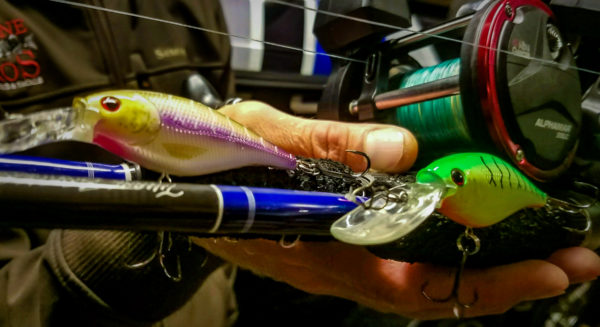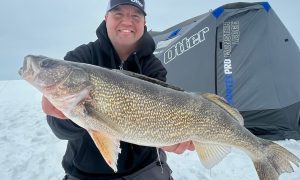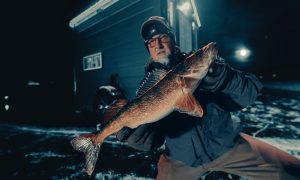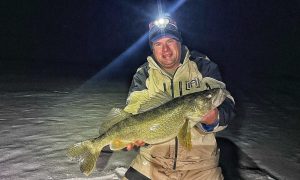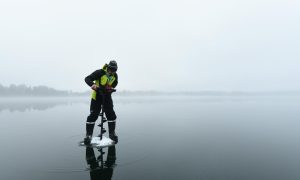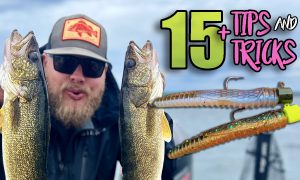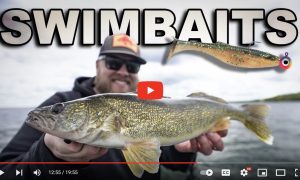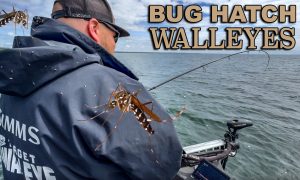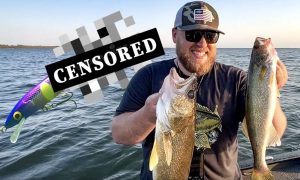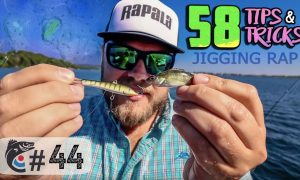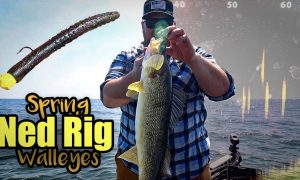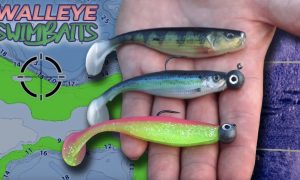Leadcore is exactly what it sounds like: fishing line with a lead core. The line itself sinks and is typically used to get crankbaits to dive deeper, but NWT pro John Hoyer uses it for a different reason in shallow water:
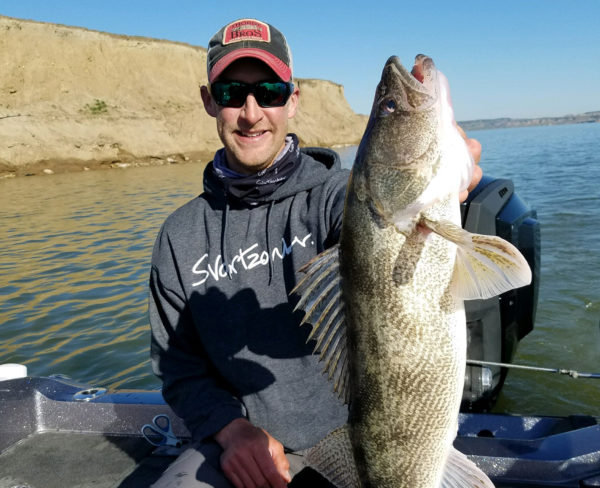
> While fishing on Sakakawea for the NWT, we’d be running cranks along the shoreline, but there’d be a dozen little points sticking out 30-40’ in a mile-long stretch. We were carving the tips of those points and nearly taking 90-degree turns…. If the lines were all the same length they’d be crossing non stop.
> Leadcore allows me to run four lines at different distances from the boat, while keeping the lures running in the same depth range. This keeps the baits from tangling when turning out and in on breaklines with many points.
> I set the inside line with mono back 80’ from the boat…the middle two rods are rigged with leadcore and set back 50’ and 60’…the outside rod has mono 100’ back.
> Leadcore also gives you way more control — you can drop just 10′ of line out and hit bottom again if you need to. It’s the equivalent of fishing a downrigger in deep water…you know exactly where you’re at all the time.
> Walleyes love motor noise in shallow water — it wakes them up and 50’ later there’s a crankbait there for lunch.
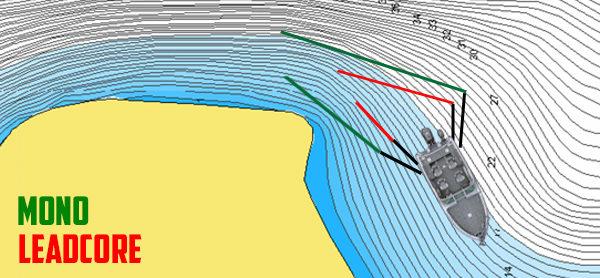
Leadcore keeps the baits from tangling when following breaklines with many points.
Line and leader
> For leadcore: I like to run 27-lb Tuf-Line MicroLead. It’s the thinnest-diameter stuff we can find – has way different dive curves than the average leadcore — and is more forgiving on big fish.
> The clearer the water, the longer the leader. The visibility on Sakakawea was 2-3’, so we were running leaders as short as 10’ and basically power fishing.
> We run Berkley Fireline leaders anytime there’s debris — that way we can clear a fouled lure by snapping it [instead of reeling all the way in]. If there’s not much debris, we run 15-lb Berkley fluorocarbon.
Crankbait selection
> Most important thing in dirty water is for a fish to be able to find your bait. Crankbaits hitting bottom is a trigger, but also a constant noise to attract fish to you. I like the #7 Berkley Flicker Shads because they seem to deflect off bottom the most, causing them to get bit.
> When dialing in a color program on multiple rods, start with: one natural, a silvery, firetiger and a purply one. That covers it all, then switch out the other cranks for the top-producing colors.
> I personally like using high-contrast colors like purple tiger, and then firetiger once the sun comes up. Firetiger is just one of those colors you’ve always gotta have tied on. As my buddy Bill Shimota says: “Any color works as long as it’s firetiger.” [lol]
